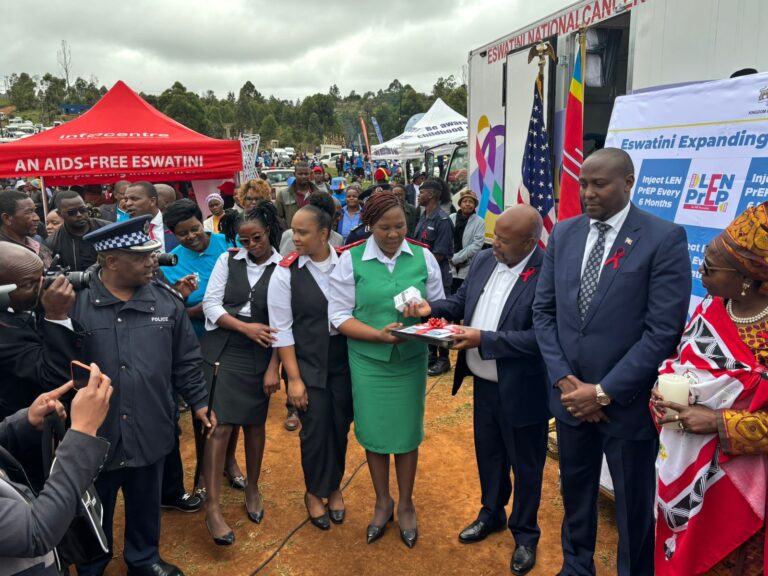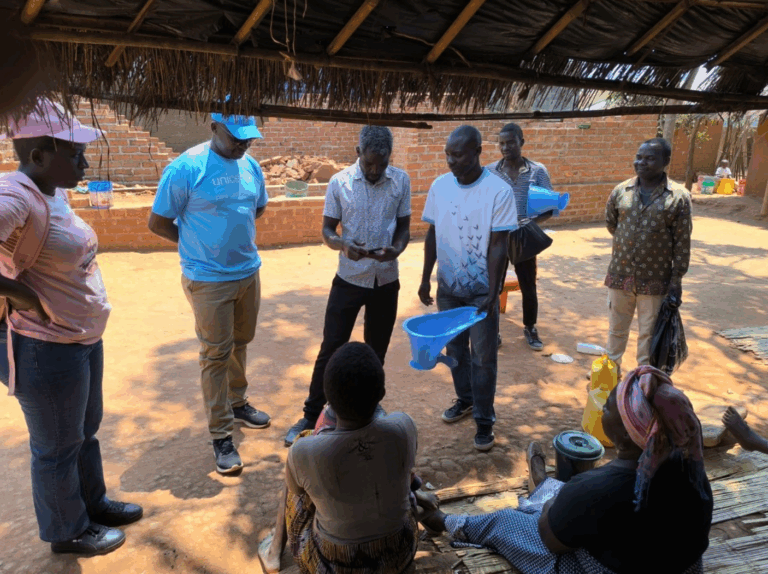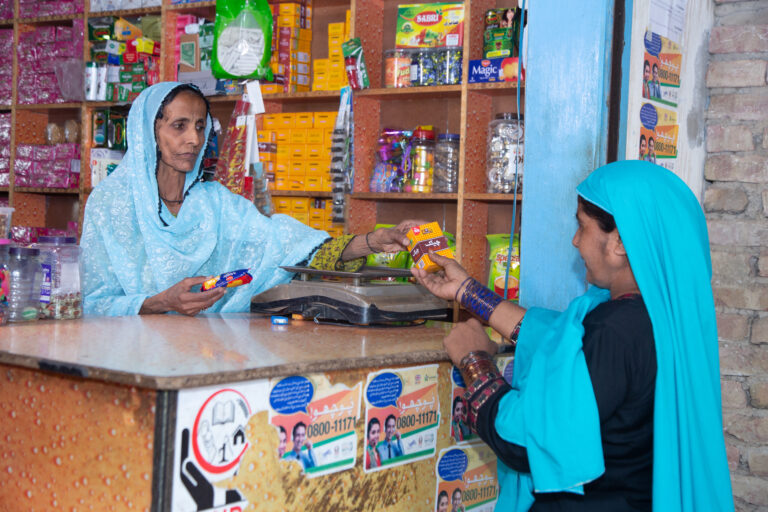By Susannah Gibbs, Senior Technical Writer, PSI, and Kendal Danna, Technical Advisor II, PSI
In a recent study, PSI explored a category of contraceptive products that are acquired and used entirely outside of the typical clinical, pharmacy, and retail contraceptive product delivery channels. Read on to learn how we used consumer insights and market forecasting to inform the product pipeline for contraceptive fertility tracking apps.
Everyone seems to be talking about apps for fertility tracking, especially social media influencers and even stars from Bachelor Nation. These apps—especially ones not meant to be used for preventing pregnancy—can be challenging to use correctly and they are not always as effective as methods like the pill and IUDs. But if women are also using technology to support their family planning journey, we must meet them where they are, work to understand how to appropriately market these apps, and educate around their benefits and limitations.
Contraceptive fertility tracking apps (CFTAs) take user inputs about cycle days, and sometimes additional health information like daily basal body temperature measurements, and provide algorithm-based predictions about unsafe (fertile) and safe days for sex for those trying to prevent pregnancy. Although similar products like period tracking apps have been widely used in some markets for cycle tracking and by those trying to get pregnant, CFTAs are unique in their ability to more accurately predict fertile windows and they are backed by clinical data that show they can effectively be used as contraception. Natural Cycles was the first CFTA to receive approval by the US FDA in 2018, followed by Clue Birth Control in 2021, but these options are very limited in global markets, particularly low-and middle-income countries (LMICs).
Our Research Found Substantial Interest in CFTAs
Our recent publication in Studies in Family Planning describes research we conducted to better understand the market for CFTAs in an LMIC setting. Under the USAID funded Expanding Effective Contraceptive Options (EECO) project, led by Catalyst Global, and with the help of research firm Nielsen IQ, we conducted a web-based survey with 1,600 women of reproductive age in urban areas of the Philippines. We then conducted qualitative in-depth interviews with 36 of these women to get a more detailed understanding of their experiences and preferences related to CFTAs. This mixed-methods approach allowed us to capture information related to costs and quantify demand while also capturing more nuanced perspectives related to preferences and experiences.
Here is what we learned:
- After seeing a video describing a CFTA, most women (84%) were interested in using the app.
- Women liked that an app would have no side effects and wouldn’t require clinic visits—it would also give them more control over when to start or stop using contraception.
- On average, women were willing to pay about what they currently paid for contraception, about $5.20 per month.
The introduction and marketing of CFTAs as well as related non-FDA approved femtech products in the U.S. and Europe has been accompanied by some controversy. Some of these apps have been heavily promoted in the U.S. and Europe through social media influencers, including at least six from the Bachelor franchise. Some influencers have provided incomplete or misleading information, emphasizing the benefits of a hormone-free method and leaving their followers unaware that CFTAs may not be for everyone. CFTAs are not the best choice for people who want the most effective method to prevent pregnancy or who don’t want to avoid sex or use an alternate method on unsafe days.
Nevertheless, effectiveness is not every user’s top priority, and CFTAs can be an important introduction to the contraceptive mix for those whose preferences are not met by popular modern contraceptive methods. As products that can be used without visiting a healthcare provider and without the need to visit a pharmacy for regular refills, CFTAs also expand the contraceptive options for self-care. They also offer a hormone-free option with no side effects for those who need or prefer a nonhormonal method. Furthermore, they have the potential to be popular in LMICs that have growing economies where many people use smartphones.
Barriers to CFTA use
The Philippines is a promising market for CFTAs because of its growing economy where over half of people own a smartphone. We surveyed 1,600 women in the Philippines to assess acceptability and willingness to pay for a hypothetical contraceptive fertility tracking app: “The Family Planning App.” This app, as described to potential users in the study, would be based on the Standard Days Method (like DOT) and would not require tracking basal body temperature.
Before responding to the survey, we showed women a 13-minute video that described “The Family Planning App.” They then completed the survey that asked various questions about their interest in using it and what they would be willing to pay.
Although interest in CFTAs was high, and women clearly saw their benefits, product introduction to the Philippines or other LMIC markets will likely require subsidies. Natural Cycles, the only FDA approved CFTA on the open market, is currently priced at $16.99 per month for a monthly subscription or $9.99 per month for an annual subscription in the US market, approximately two to three times what women in the Philippines were willing to pay. An app based on the Standard Days Method, however, could be particularly suitable to LMIC markets as it could be less expensive to use than other CFTAs like Natural Cycles that require daily effort and costly devices to track basal body temperature.
We also found that despite the absence of approved CFTAs in the Philippines, many women were using period tracking apps to prevent pregnancy. In fact, one in four women said that they had used something similar to the “The Family Planning App,” and 8 percent of women currently using a contraceptive method said that they were using a period-tracking app (but not a CFTA) for this purpose. Thus, many women seem primed to the idea of using an app for contraceptive purposes, yet no approved CFTAs are currently available in the market.
Although CFTAs, and particularly cycle tracking apps not intended for contraceptive purposes, are not the most effective methods to prevent pregnancy, expanding the method mix advances a rights-based approach to family planning whereby method provision should match to user preferences.
Interest in CFTAs is growing. What do investors need to consider?
With a better understanding of how women are using these products, market opportunities could be identified for add-on products or information to increase their contraceptive effectiveness. For example, future investments might consider the following:
- How might non-CFTA period tracking apps compete in the market with CFTAs?
- Can period trackers be effectively used as contraception and how could we support more effective use of existing free and paid market offerings like other non-CFTA apps?
- What other features could be integrated into CFTAs to increase demand and improve user experience?
- Could CFTAs provide other non-contraceptive benefits like support for partner communication and menstrual health?
- How might app use change over time for a single user from adolescence into adulthood, from menstruation, to pregnancy, to menopause, and beyond?
These consumer insights, along with our market forecasting, have provided valuable information to investors and major donors who may be in a position to subsidize the introduction of similar or related products in the future. Starting with consumer insights to develop a nuanced understanding of consumer preferences can help ensure that market-based solutions are also rights-based.
Consumer insights are essential to supporting women’s voice, choice, and agency. By supporting access to effective and affordable CFTA options, we can better support women’s choices.
Want to learn more about supporting access to effective and affordable sexual and reproductive healthcare? Click here.



















